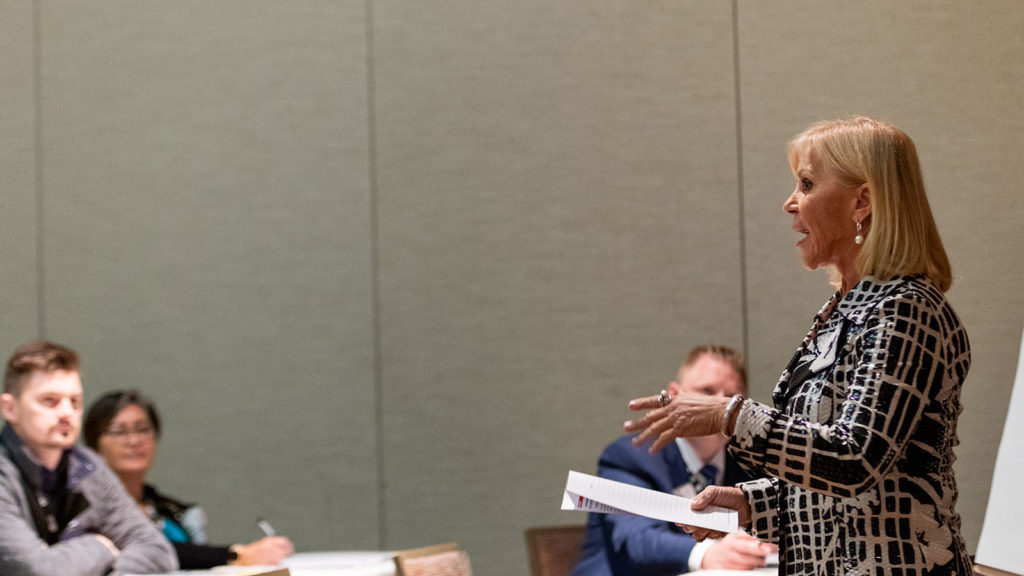The four components of creating more engaged team members
A whopping 79 percent of Tribal casinos said that staffing challenges are, for the third straight year, the number one challenge they’re facing this year, according to Raving’s 3rd Annual Indian Gaming National Marketing Survey. The reasons why this is so very important are that team member turnover and poor performance affect the entire organization – not just workplace morale and team member performance, but also guest loyalty and satisfaction, and even the bottom-line profitability of your company.
If you’re not familiar with Loyalty360 (www.loyalty360.org), this is a great online resource for casino marketers. They recently published a white paper about employee engagement strategies that I think is among the best I’ve ever read. The article boils down this complex subject into four key areas: incentives, training, advocacy and culture.
Loyalty360 conducted research that included speaking with senior-level marketing representatives across a range of industries. They asked questions germane to the guest loyalty space, and one of the most salient topics was employee engagement. Respondents were asked, “How does team member loyalty and engagement fit into the guest loyalty discussion?” While responses varied, it became clear that there are four main ways that brands have attempted to create more engaged team members. Understanding these methods can help your property improve several KPIs.
Number one: INCENTIVES
“The most basic method that employers have for getting team members engaged is offering incentives. While this method does not, typically, create the kind of deep emotional engagement that generates true loyalty, it certainly has its positives. There’s quite a lot to be said for giving bonuses, merchandise, discounts and other incentives to team members. Things like this tell them that there’s real monetary value in going above and beyond in the workplace.”
Loyalty360 qualifies the use of incentives to enhance employee engagement by explaining the process as starting with an employee engagement survey, identifying issues, creating an action plan and offering incentives for reaching objectives. This is a short-term transactional approach that generates results, and it can lead to changing long-term behavior, which is transformational engagement.
Number two: TRAINING
“Another method of fostering employee engagement is through training. Proper training, however, requires that brands have a well-defined culture, one that they want team members to internalize.”
Defining an internal culture and “walking the walk” is a top-down process. When respondents to the Loyalty360 survey were asked, of six options, which area they could most improve in, a minor majority of almost 35 percent said that they could most improve in “culture from the top down.” The next most chosen option was “educating everybody in the organization,” at over 30 percent. Undoubtedly, brands understand that they need to train team members well and that, to do so, the C-suite needs to be involved. Proper training should teach team members what guests need and expect, and instill a greater desire to meet those needs and expectations. Training will have the added benefit of making team members more loyal to their employers.
Number three: ADVOCACY
“Urging team members to become promoters and advocates tends to increase engagement as well as incentives and training. This is especially important for frontline team members. These team members mediate all guest interactions, so getting them to advocate for a brand while doing so will have a huge impact on guest loyalty.”
To deepen engagement with team members, companies need to align them with brand values. This will enable team members to promote those values to guests. As team members do so, they will begin to internalize those values. This, of course, will deepen engagement and, in turn, improve their advocacy efforts. A critical component of this process is integrity. Is your company really exemplifying the values that you claim to have? If not, the trust with team members won’t form and team members won’t advocate for you.
Number four: CULTURE
“In addition to organizational integrity and transformational engagement, culture requires outlets for team members’ thoughts. Ensuring your team members have a voice enables them to take part in dialogue across your organization about matters that impact the current and future performance of an organization. If you have a strong team member voice, conversations will take place that are genuinely two-way.”
Culture serves as the foundation of all the other methods of employee engagement, from incentives to training to advocacy. If your company doesn’t have a statement of values, then you need to write one and base your processes around it. You also need to revisit that statement often to determine if it truly represents the culture that the company wants to exist organization-wide and that you’re living your culture.
Interested in other industry trends and recent feedback on marketing, labor and much more? Get your own copy of Raving’s Annual Indian Gaming National Marketing Survey being released April 2020 by emailing chris@tgandh.com.


